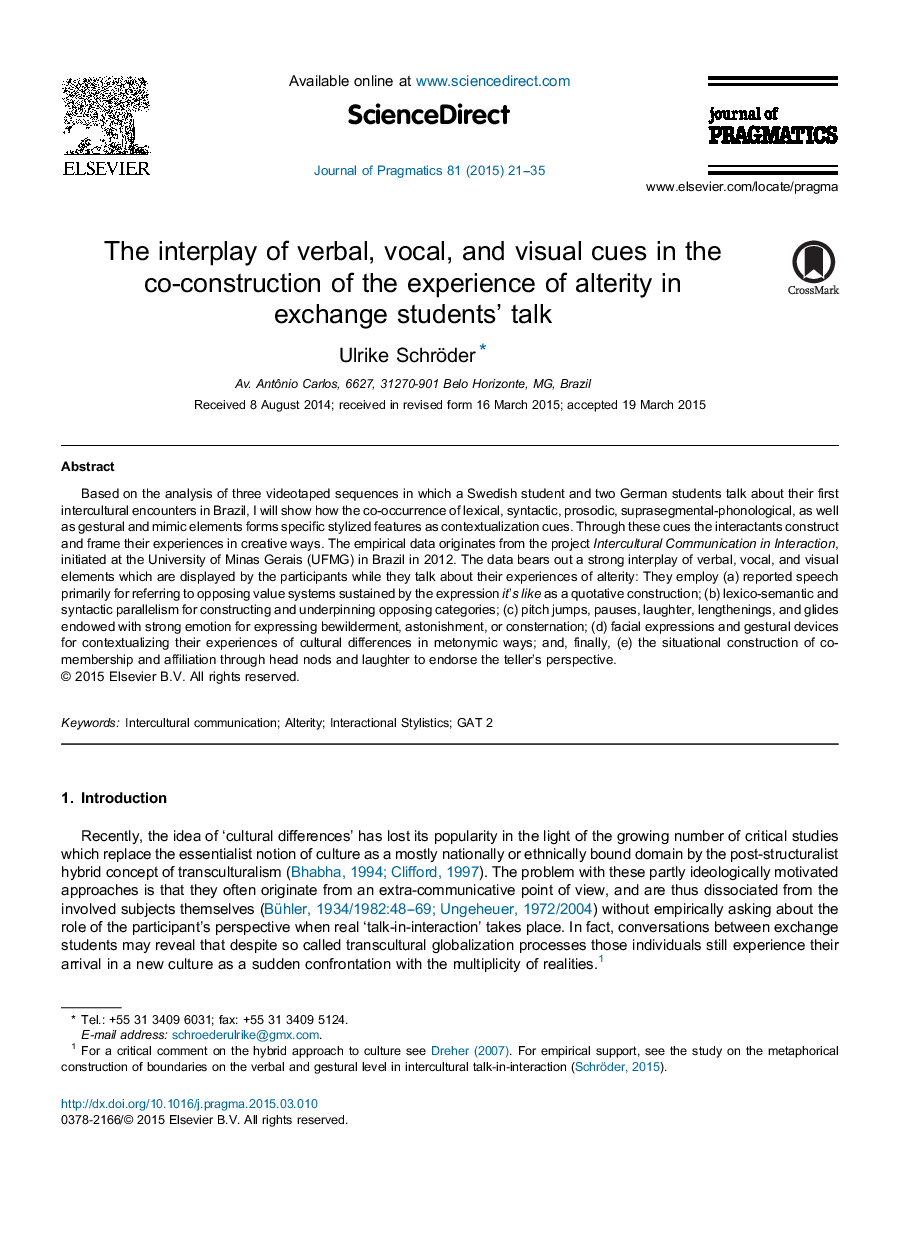| Article ID | Journal | Published Year | Pages | File Type |
|---|---|---|---|---|
| 932619 | Journal of Pragmatics | 2015 | 15 Pages |
•Analysis of exchange students’ talk about their experience of alterity in Brazil.•Co-occurrence of verbal, vocal, and visual cues to form stylized features.•Use of reported speech as well as lexico-semantic and syntactic parallelism for referring to opposing value systems.•Application of paraverbal and nonverbal means for expressing bewilderment and consternation.•Situational construction of co-membership and affiliation.
Based on the analysis of three videotaped sequences in which a Swedish student and two German students talk about their first intercultural encounters in Brazil, I will show how the co-occurrence of lexical, syntactic, prosodic, suprasegmental-phonological, as well as gestural and mimic elements forms specific stylized features as contextualization cues. Through these cues the interactants construct and frame their experiences in creative ways. The empirical data originates from the project Intercultural Communication in Interaction, initiated at the University of Minas Gerais (UFMG) in Brazil in 2012. The data bears out a strong interplay of verbal, vocal, and visual elements which are displayed by the participants while they talk about their experiences of alterity: They employ (a) reported speech primarily for referring to opposing value systems sustained by the expression it's like as a quotative construction; (b) lexico-semantic and syntactic parallelism for constructing and underpinning opposing categories; (c) pitch jumps, pauses, laughter, lengthenings, and glides endowed with strong emotion for expressing bewilderment, astonishment, or consternation; (d) facial expressions and gestural devices for contextualizing their experiences of cultural differences in metonymic ways; and, finally, (e) the situational construction of co-membership and affiliation through head nods and laughter to endorse the teller's perspective.
